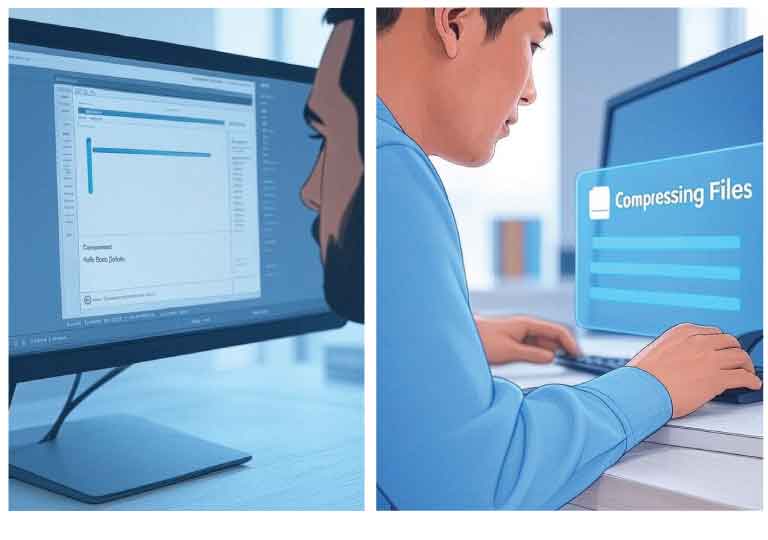Perhaps you’re zipping up photos from your summer vacation, exporting a video you created that you either want to upload to YouTube, or download some software you downloaded, in all these cases compressing it reduces it in size whilst retaining the information you need in the file. But how do various types of file-compression systems work — and why should you care?
Below is our selection of the most popular file compression types, how they work and when you should use them.
What is File Compression?
File compression is a type of data compression. Personally, I find this efficient and a worthwhile space-saver; and file transfers take place MUCH more quickly. Two cases of compression are possible:
- With Compression: Lossless compression. It is possible to fully recover the input file.
- Lossy Compression: Some data gets thrown away so the file can be smaller - commonly used in media (images, audio, video).
Standard Compression Formats by File Types
ZIP & RAR (MusicLossless)
How it works: ZIP and RAR compress files by detecting patterns of duplication and redundancy in the data. So instead of "cat cat cat cat" it stores "4×cat".
Uses: Multiple files packaging, backups, software downloads.
Utilities: WinRAR, 7-Zip, Windows Explorer (ZIP).
JPEG (Images – Lossy)
How it works: JPEG throws away some details in the image that the human eye is less sensitive to, like small variations in color. It applies discrete cosine transformation on the image data.
Pros: Great size-to-quality ratio.
Cons: Repeated saves degrade quality.
Applications: Photography, web graphics, social media.
PNG (Images – Lossless)
How it works: PNG uses DEFLATE compression, which retains all the bits of an image but compresses them efficiently.
Pros: Maintains original quality, supports transparency.
Cons: Larger than JPEG.
Use Cases: Web design, logos, icons, screenshots.
MP3 (Audio – Lossy)
How it works: MP3 compression removes audio frequencies most people can’t hear, using psychoacoustic modeling.
Use Cases: Streaming music, podcasts, mobile playback.
Alternatives: AAC, OGG.
FLAC (Audio – Lossless)
How it works: FLAC compresses audio without losing any sound data.
Applications: Archiving high-quality audio for audiophiles.
Pros: Perfect quality, relatively small size.
Cons: Larger than MP3.
MP4 & MOV (Video – Lossy)
How it works: These use video codecs like H.264 or H.265 to compress video by saving keyframes and predicting changes.
- MP4: Better compatibility, smaller file size.
- MOV: Preferred by Apple, excellent for editing.
Use Cases: Internet video, mobile video, professional editing.
PDF (Documents – Mixed)
How it works: PDFs compress embedded images (JPEG) and fonts (ZIP) to reduce size.
Use Cases: E-books, forms, brochures.
Tools: Adobe Acrobat, online compressors.
Lossless vs. Lossy: Quick Comparison
| Feature | Lossless Compression | Lossy Compression |
|---|---|---|
| Data Recovery | All recoverable | Some recoverable; some lost permanently |
| Applications | Text, source code, PNG, FLAC | Images, sound, video |
| Examples | ZIP, PNG, FLAC | JPEG, MP3, MP4 |
| File Size | Larger | Smaller |
How to Compress Files
- For documents and standard files:
- Use built-in ZIP compression (Right-click → Compress/Zip)
- Try WinRAR or 7-Zip for more control
- For media files:
- Online Tools:
- fileconvertz.com – For fast web-based conversions
Conclusion
File compression has a whole lot more going for it than just reducing file sizes. Whether you’re archiving documents or sharing a video on social media, understanding how various kinds of compression function may enable you to get the most out of the format you use.
So next time you see .zip, .mp3, .mp4, or .jpeg, you’ll know not only what it is — but how it’s working.
